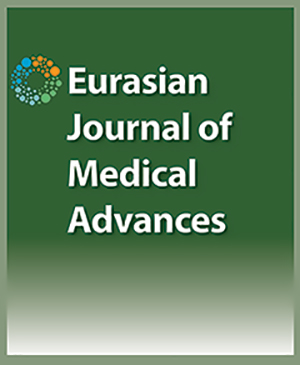

The Pain of Sending Away Cancer Patients Amidst the COVID-19 Pandemic in Philippines
Frederic Ivan Ting1, Aveline Marie Ylanan2, Dennis Lee Sacdalan11Department of Medicine, Division of Medical Oncology, University of the Philippines, Philippine General Hospital, Manila, Philippines, 2Department of Radiology, Division of Radiation Oncology, University of the Philippines, Philippine General Hospital, Manila, Philippines,
Ever since the novel coronavirus disease (COVID-19) was declared a pandemic by the World Health Organization on 11 March 2020, the health systems of countries around the world have been put under immense pressure from the influx of patients infected with the virus. In the Philippines, the first case of COVID-19 was reported on 30 January 2020. Two months later the first local transmission of COVID-19 was confirmed.1 As part of the Philippine Department of Healthís plan of action, our institution was one of the three tertiary hospitals appointed to be a COVID-19 referral center.2 Being such, majority of the logistics and manpower were channeled towards taking care of patients confirmed to be COVID-19-positive. Also, non-emergency out-patient specialty services and admissions were halted. This included the temporary suspension of operations of our Cancer Institute to ensure the safety of cancer patients who are mostly immunocompromised and have a higher risk to be infected by the virus.3 Previously, we would see an average of 120 patients for checkup, cater to 40-50 patients on outpatient chemotherapy, 80-100 patients on radiotherapy, and take care of 20-25 patients admitted for inpatient chemotherapy regimens on a regular workday. This past week, most of our time was spent answering phone calls and text messages from patients, explaining to them the unfortunate scenario of closed clinics and suspended services, and facilitating the transfer of their care. Identifying institutions that would accommodate them for transition of care was the easy part. However, since majority of our cancer patientsí chemotherapy regimens are sponsored by our institutionís social service, they would have to pay out-of-pocket for their drugs upon transfer to other clinics. This would most likely be a major obstacle to the continuity of cancer care. Thus, although they were given guidance in transferring many would still prefer to continue treatment at our institution as soon as it is deemed safe and operational. Apart from the financial hurdles, the scarcity of institutions that can provide adequate oncologic services and the difficult commute to these centers have also added to the challenges faced by our patients. In addition, limited stocks of chemotherapy drugs due to restricted deliveries hampered by the lockdown pose a threat to drug access. At present, we are only able to offer temporizing measures through phone consultations for most patients. Cases of COVID-19 in the country continue to rise, making us unsure when regular operations can resume. For our cancer patients, especially those with rapidly progressing and potentially curable tumors, is it fair to have them wait? In a situation of an international health emergency such as this COVID-19 pandemic, the principle of justice will ethically dictate the allocation of very limited resources such as manpower and hospital. This involves treating patients fairly and equitably, which means those who are sicker and need more urgent care are prioritized. And in the spirit of non-maleficence, the precautionary principle can be invoked in creating a framework for prioritizing the use of systemic chemotherapeutic treatments and radiotherapy during the pandemic.4 Such a framework does not make decision-making any easier because classifying cases for prioritization is not always clean-cut. The exercise of clinical judgment on the benefits and risks of cancer treatments can be equivocal in many situations and can place undue pressure on the attending oncologist. Studies are yet to show the exact repercussions that will result from the displacement of these cancer patients and the disruption of their chemotherapy or radiotherapy plans on their disease trajectory. Nonetheless, the pain felt in sending away cancer patients and the possible morbidity it may bring in the next few weeks will definitely be remembered after this pandemic. Being diagnosed with cancer is already emotionally taxing by itself. How much more is worrying about where to go for treatment? Pain pierces the hearts and minds of both the patient and the attending physician as they both deal with the uncertainties of making difficult treatment decisions in less than ideal situations. It is hoped that we evaluate, learn and restructure our health care systems to be better prepared for and capable of handling the next pandemic so that the future generation can avoid the same agonizing experience. As we struggle to win the war against COVID-19, let us not forget that there are people who have been fighting the battle against cancer even before this pandemic began. Keywords: cancer patients , covid 19 , pandemic References: 1. https://www.who.int/philippines/emergencies/covid-19-in-the-philippines 2. Laneta CA. UP-PGH preparing to operate as COVID-19 referral center. University of the Philippines News. 24 March 2020. https://www.up.edu.ph/up-pgh-preparing-to-operate-as-covid-19-referral-center/ 3. Liang W, Guan W, Chen R, et al. Cancer patients in SARS-CoV-2 infection: a nationwide analysis in China. Lancet Oncol 2020;21:335?337. 4. Hanna TP, Evans GA, Booth CM. Cancer, COVID-19 and the precautionary principle: prioritizing treatment during a global pandemic. Nat Rev Clin Oncol; https://doi.org/10.1038/ s41571-020-0362-6 (2020).
Cite This Article
Ting F, Ylanan A, Sacdalan D. The Pain of Sending Away Cancer Patients Amidst the COVID-19 Pandemic in Philippines. EJMO. 2020; 4(4): 349-350
Corresponding Author: Frederic Ivan Ting



